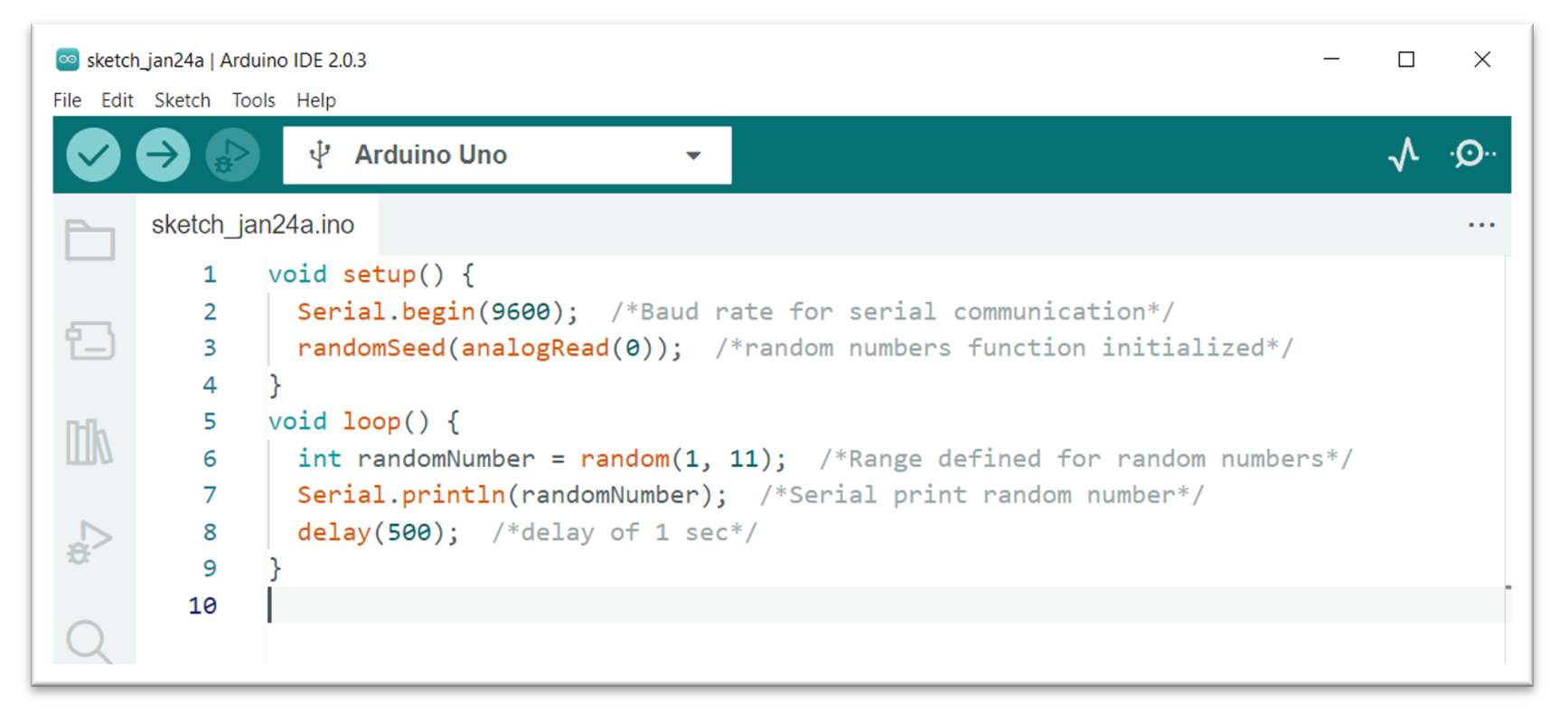The Arduino random seed function is a way to initialize the random number generator with a unique value, ensuring that the generated numbers are truly random.
Introduction to randomSeed() Function
In Arduino, the randomSeed() function is used to initialize the pseudorandom number generator with a seed value. By providing a seed value to randomSeed(), the generator will always shuffle the sequence of random numbers generated for a given seed. This can be useful for testing or reproducibility. The function takes an integer value as its argument, which can be any number or variable.
In Arduino code using the “randomSeed(seed)” function a pseudo or random number can be generated. The “seed” parameter is an unsigned long value that can be any number between 0 and 4,294,967,295.
Syntax
The syntax for the randomSeed() function in Arduino is as follows:
Parameter
The function takes one parameter:
seed: An integer value that serves as the seed for the pseudorandom number generator. This value can be any number or variable.
Return
The randomSeed() function has no return value.
Example Code
For example, if you want to generate a random number between 1 and 10, you can use the following code:
Serial.begin(9600); /*Baud rate for serial communication*/
randomSeed(analogRead(0)); /*random numbers function initialized*/
}
void loop() {
int randomNumber = random(1, 11); /*Range defined for random numbers*/
Serial.println(randomNumber); /*Serial print random number*/
delay(500); /*delay of 1 sec*/
}
The code above initializes the random number generator with a unique seed value by using the analogRead function. This function reads the value of an analog pin and returns it as a number between 0 and 1023. Next a number between 1 and 10 will be generated. The generated number is then sent to the serial port and can be viewed using the Arduino serial monitor.
Note: It is important to note that calling a random seed function in the loop() function may result in generating the same number again and again. It’s recommended to use the randomSeed() function in the setup() part of the code.
Output
In the output serial monitor displayed some random number generated using the Arduino Uno board.
Note: It is important to note that the randomSeed() function must be called before using any of the random number generating functions like random() or randomGaussian() in order for them to produce different results on each run.
It is also recommended to use randomSeed() with an unpredictable value, such as the output of analogRead() on an unconnected pin.
Conclusion
In conclusion, the Arduino randomSeed() is a powerful tool for generating truly random numbers, which can be useful for a variety of applications. It allows users to easily initialize the random number generator with a unique value, ensuring that the generated numbers are truly random. Using randomSeed() any pseudo value can be generated.


